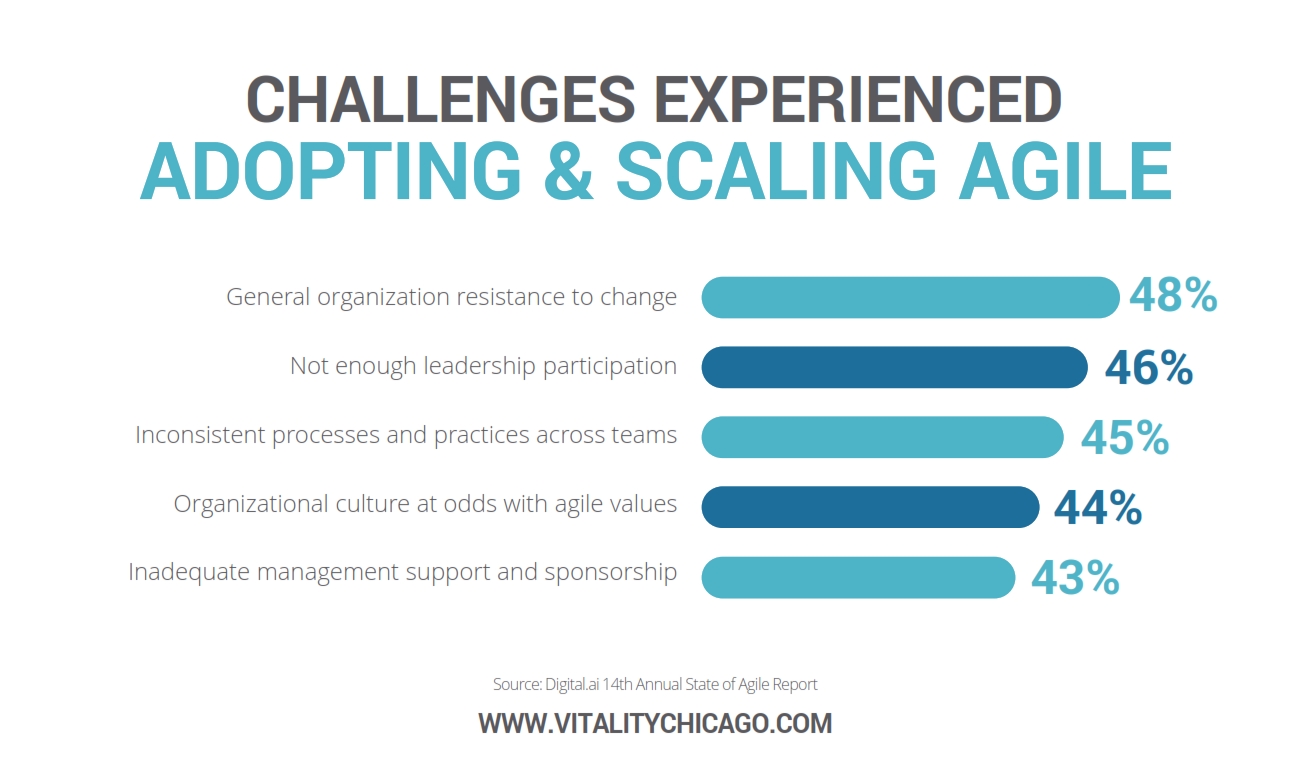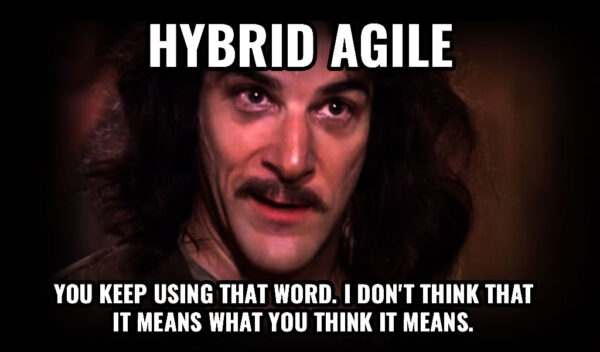 Hybrid Agile is a frequently used term that is so ambiguous that it creates confusion and misunderstanding. Two people using the term can have two completely different intentions. This post provides a framework for understanding what people usually mean and helps bring clarity to the term, related terms and the various interpretations.
Hybrid Agile is a frequently used term that is so ambiguous that it creates confusion and misunderstanding. Two people using the term can have two completely different intentions. This post provides a framework for understanding what people usually mean and helps bring clarity to the term, related terms and the various interpretations.
What is a Hybrid?
Let’s start with a definition of Hybrid being used as an adjective:hybrid
- relating to or produced from parents of different species, varieties, or breeds
- having or produced by a combination of two or more distinct elements
- having two different types of components performing essentially the same function
So hybrid is used to describe two or more elements in combination. The intent is to create something better by taking the best of each of the underlying components. Here are some common examples of hybrids:
- Harry Potter – Harry Potter is perhaps the most well-known hybrid ever! He is a hybrid of a wizard (someone with magical powers) with a muggle (someone with no magical powers). The obvious benefit of being Harry Potter is that you will get books written about you.
- Mule – In the animal kingdom, a good hybrid example is a mule which is the offspring of a male donkey and a female horse. Mules are more patient, hardy and long-lived than horses and are described as less obstinate and more intelligent than donkeys.
- The Prius – The Toyota Prius was the first mass-produced hybrid car. The car contains an electric motor and batteries for city driving, and a gasoline engine and fuel tank for longer excursions. The benefit of the hybrid Prius is that it produces a better balance of fuel economy and performance than either pure electric or pure internal combustion propulsion.
What is Agile?
The dictionary definition of agile provides very little help. From Merriam Webster, Agile is:agile
- marked by ready ability to move with quick easy grace
Most of you probably know the story of the “Manifesto for Agile Software Development” from 2001; a meeting of experts where the 4 agile values and 12 agile principles were produced. Since that fateful gathering in Snowbird Utah, we have a clear sense of what “Agile Software Development” means. Most people have shortened down “Agile Software Development” down to just “Agile”. In addition, those values and principles from the Manifesto for Agile Software Development are being applied to other types of work that doesn’t include software. This includes marketing and sales, automobiles, and even personal agility. Calling something agile today could mean different things. I personally interpret “agile” today to mean a way of working, or philosophy or development method that is compatible with those agile values and principles. That generally means an approach that:
- Puts customer satisfaction first
- Leverages frequently deliveries to gain feedback and predictability
- Believes in empowering and trusting the team, asking them to work at a sustainable pace, and lets the team self-organize
- Values delivery of working solutions over producing interim deliverables like documentation
- Expects and leverages customer feedback and changes, rather than trying to restrict or avoid change
- Believes that teams need to collaborate closely with customers, requesters and end users
- Values communicating face to face rather than through written documents
- Prefers building quality throughout rather than cutting corners to hit a fixed deadline or arbitrary commitment date
- Inspects and adapts to continually improve the way of working
Benefits of Agile
Why adopt these ways of working? Well, the key benefits include customer satisfaction, speed of delivery, and flexibility or responsiveness to change. These provide business agility which is needed in today’s competitive environment. Digital.ai (formerly Collabnet), the provider of VersionOne, an agile life cyle management tool, creates an annual survey they call the Annual State of Agile Report. The 2020 report showed the following as the key benefits achieved by adopting agile.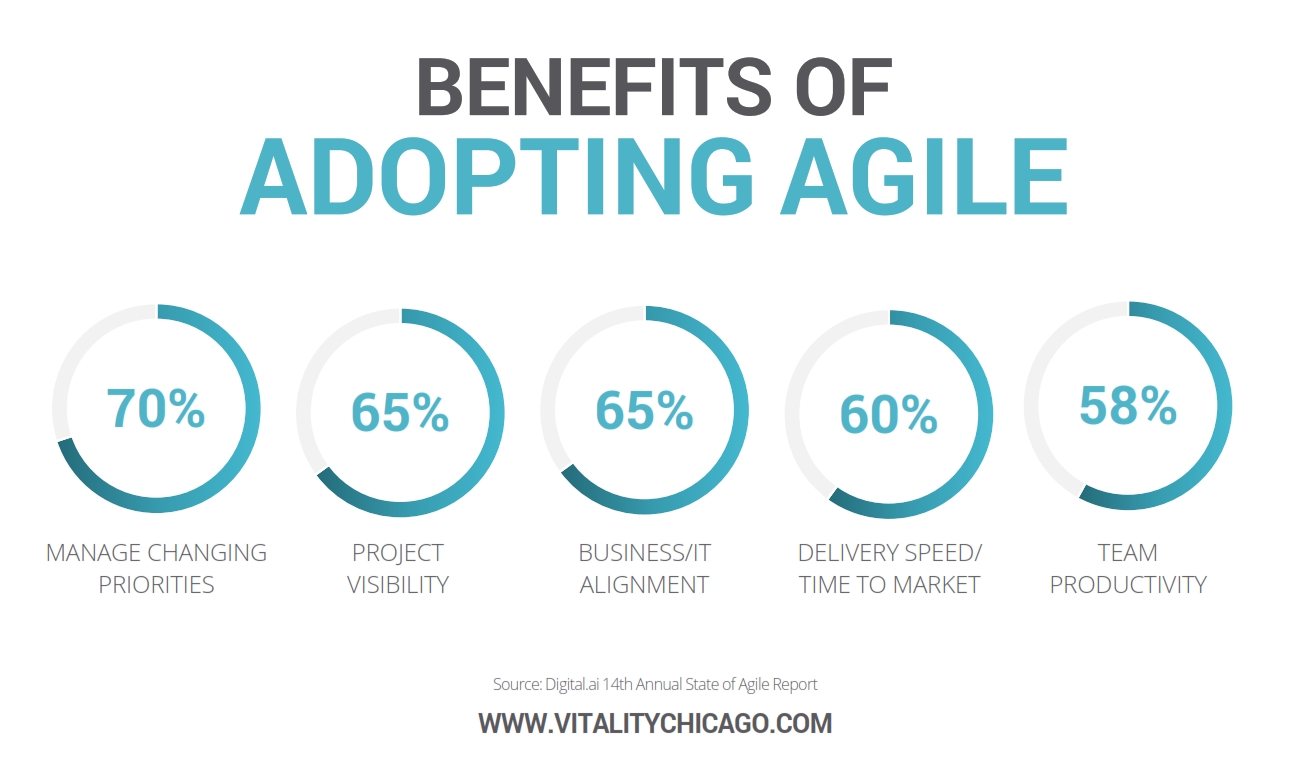
What is Hybrid Agile?
It is when we begin using the term “hybrid agile” that the wheels begin to fall off. Contrary to what most people think, hybrid agile is a blend of two or more agile approaches. Mixing agile and waterfall, such as the common “Water-Scrum-Fall” is more properly called a “hybrid development approach”. This use of hybrid agile is consistent with how Digital.ai uses the term in their Annual State of Agile Report. Take a look at the chart below labeled “agile methods and practices” and the hybrids mentioned. After Scrum, the next three highest categories of agile methods are hybrids including general hybrid, ScrumBan (Scrum + Kanban), and Scrum/XP.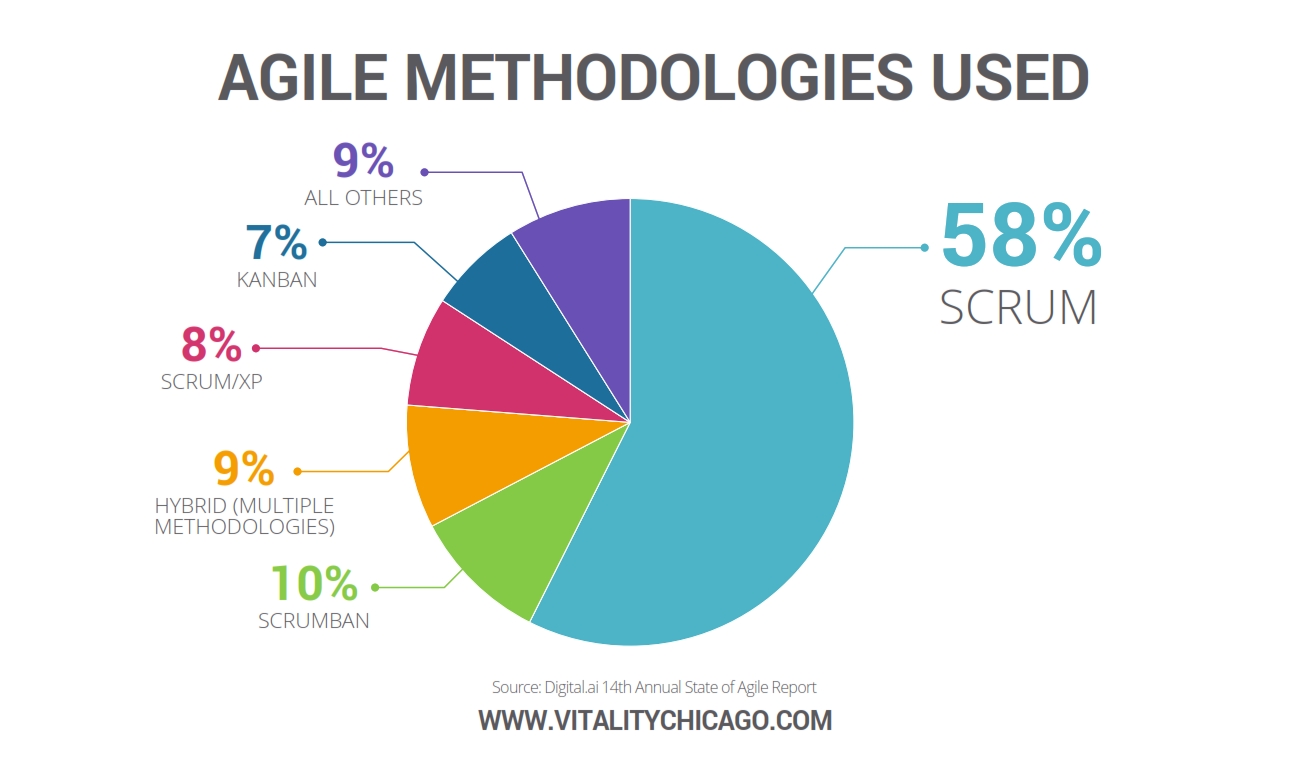 The key here is that we are hybrid, but we are still very consistent with agile ways of working and those principles I listed above.
The key here is that we are hybrid, but we are still very consistent with agile ways of working and those principles I listed above.
But wait, That’s Not What I Meant by Hybrid Agile
I know, I know, that is not what YOU meant by hybrid agile. What you probably meant was hybrid development approaches.development approach
- The method used to create and evolve the product, service, or result during the project life cycle, such as predictive, iterative, incremental, agile, or a hybrid method.
Unfortunately, most people tend to use the term hybrid to refer to a mix of Agile and Traditional. In a 2020 survey by Dr. Ayelt Komus and his team at Koblenz University, he asked respondents how they used approaches for the planning and execution of projects or development. A whopping 43% said they used a mixed form or hybrid approach of agile and traditional. Surprisingly, only 20% said they were using purely agile approaches. (Only 9% said they work in a consistently traditional project management mode)
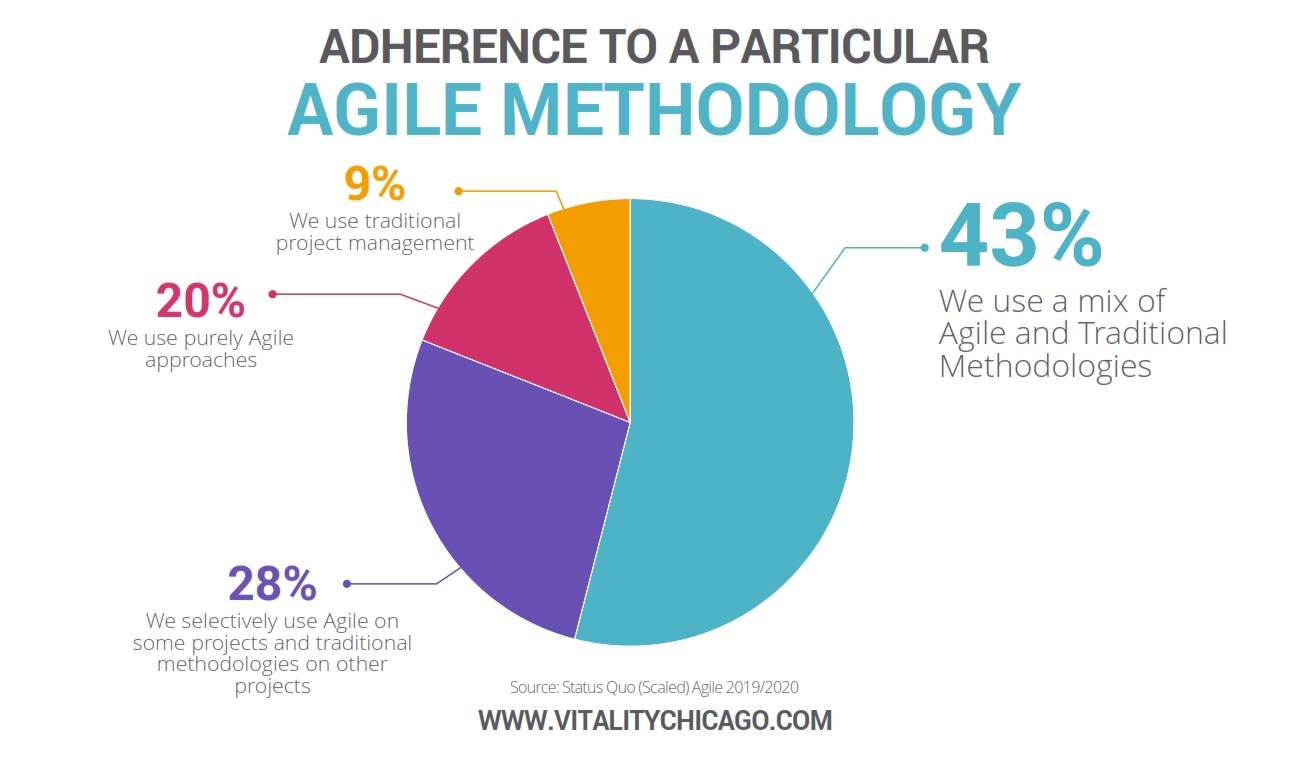
“A project life cycle is the series of phases that a project passes through from its start to its completion. A project phase is a collection of logically related project activities that culminates in the completion of one or more deliverables. The phases can be sequential, iterative, or overlapping.”The practice guide goes on to lists the following lifecycles:
- Predictive – Bulk of planning up front, and then execution by sequenced phases in one pass. Also referred to as plan-driven or waterfall.
- Iterative – Use feedback from partially finished work to improve the work.
- Incremental – An approach that provides finished product throughout the lifecycle without waiting till the end.
- Agile – Approach that leverages both iterative and incremental to refine work items and deliver frequently.
All Chaos Breaks Out
And this is where all chaos breaks out. Forget the Scrum/XP hybrid or the weird sounding ScrumBan, these are both true agile hybrids. Instead, consider the following terms, most of which mean Scrum + Predictive/Waterfall:- Water – scrum – fall – Also can be written as water-agile-fall or more accurately, water-scrum-fail. The idea here is to spend time on planning the project thoroughly up front, then using agile or Scrum to develop a solution, then use more predictive approaches for deploying the solution.
- Scrummerfall – A blend of Scrum and Waterfall, similar to the above. One expert describes this as The practice of combining Scrum and Waterfall so as to ensure failure at a much faster rate than you had with Waterfall alone.
- Waterfail – See previous item.
- WaterScrum – This has been likened to having both an American Football team and a Soccer team on the field playing at the same time.
- Agilish – This could mean pretty much anything. Maybe you slept at a Holiday Inn Express.
“The reality is that the approach many organizations follow, though inspired by the Agile Manifesto, is constrained by both organizational culture and intuitive governance. The result is Agile adoption that is both challenging for the Agile team and that fails to realize Agile’s business benefits, such as faster time-to-market, increased business value, and improved flexibility and responsiveness.” — Forrester ResearchThese findings are consistent with the previously mentioned Digital.ai Annual State of Agile report. The 2020 report mentions culture, resistance to change, and inadequate management support as the top challenges experienced with adopting Agile.
